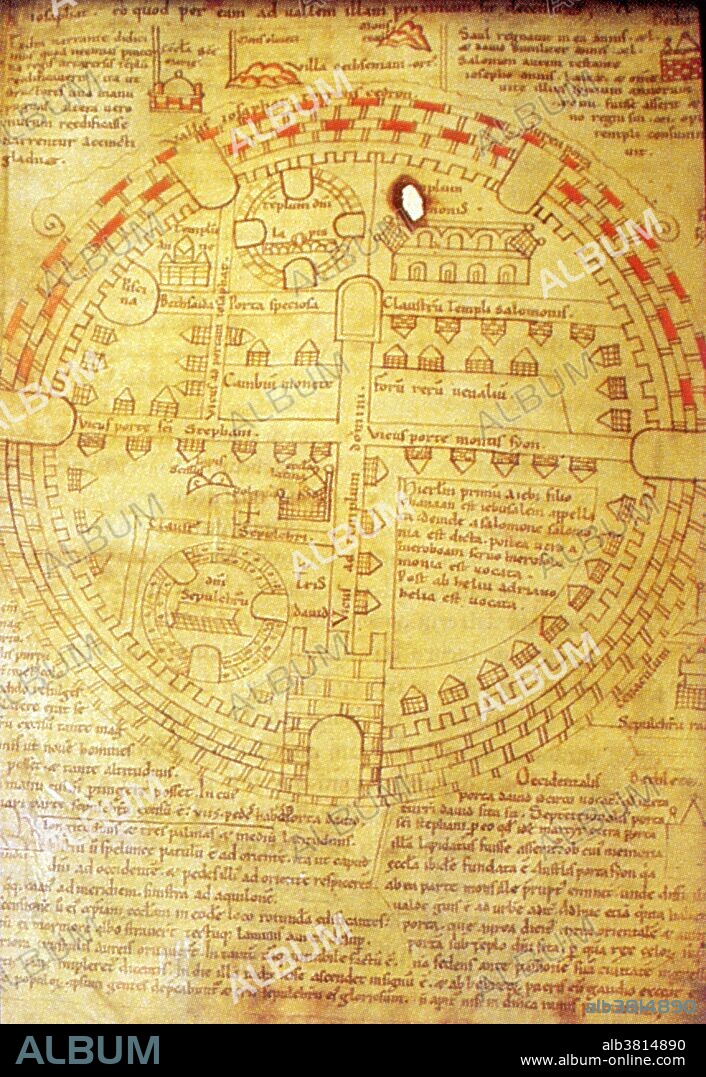alb3814890
Jerusalem, 12th Century

|
Ajouter à une autre Lightbox |
|
Ajouter à une autre Lightbox |



Avez-vous déjà un compte? S'identifier
Vous n'avez pas de compte ? S'inscrire
Acheter cette image.
Sélectionnez l'usage:

Titre:
Jerusalem, 12th Century
Légende:
Voir la traduction automatique
12th century plan of the holy city, Jerusalem. To Christians this was the center of the world. In medieval times the Holy City was called the 'Navel of the world'." During its long history, Jerusalem has been destroyed twice, besieged 23 times, attacked 52 times, and captured and recaptured 44 times. The oldest part of the city was settled in the 4th millennium BC, making Jerusalem one of the oldest cities in the world. The history of Jerusalem during the Middle Ages is generally one of decline; beginning as a major city in the Byzantine Empire, Jerusalem prospered during the early centuries of Muslim control (640-969), but under the rule of the Fatimid caliphate (late 10th to 11th centuries) its population declined from about 200,000 to less than half that number by the time of the Christian conquest in 1099. The Christians massacred much of the population as they took the city, and while population quickly recovered during the Kingdom of Jerusalem, it was again decimated to below 2,000 people when the Khwarezmi Turks retook the city in 1244. After this, the city remained a backwater of the late medieval Muslim empires and would not again exceed a population of 10,000 until the 16th century.
Crédit:
Album / NYPL/Science Source
Autorisations:
Taille de l'image:
3102 x 4500 px | 39.9 MB
Taille d'impression:
26.3 x 38.1 cm | 10.3 x 15.0 in (300 dpi)
Mots clés:


 Pinterest
Pinterest Twitter
Twitter Facebook
Facebook Copier le lien
Copier le lien Email
Email
